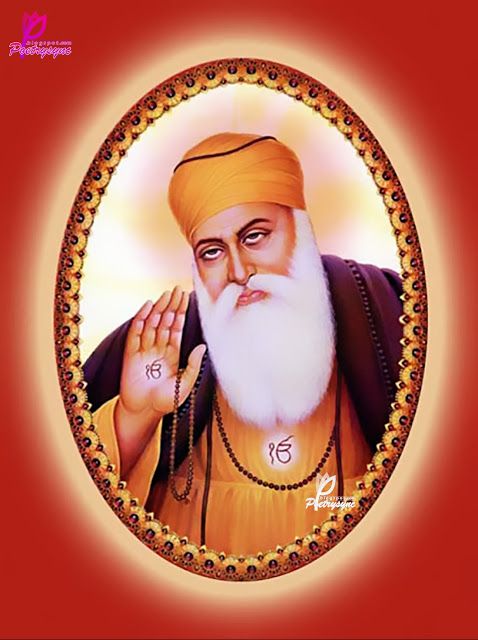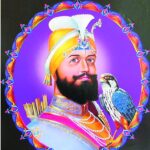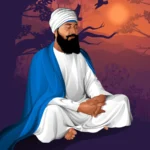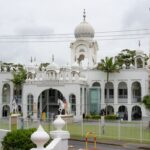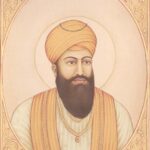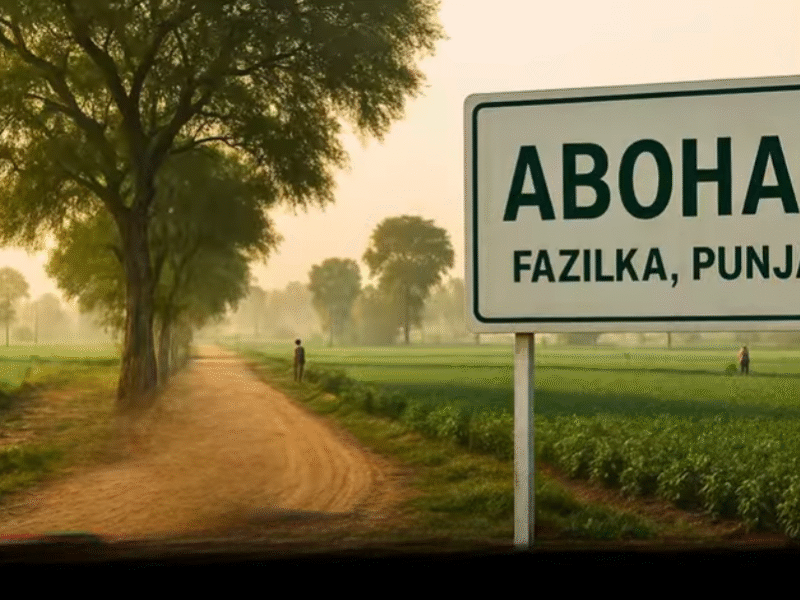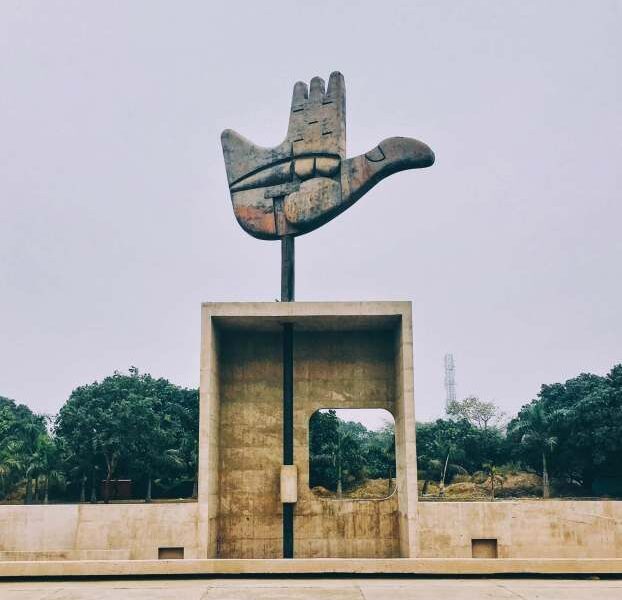Guru Gobind Singh and the establishment of Khalsa
After the death of Tegh Bahadur, Guru Gobind Singh (1666–1708), who was the most important of all the Gurus except Guru Nanak, who took over the leadership of the Sikhs. Gobind Rai, whose name was changed to Gobind Singh who may have been at the time of the creation of Khalsa, was born in Patna, the only child of Gugu Tegh Bahadur. At the age of five, he was brought to Anandpur and taught Sanskrit and Persian as well as the art of poetry and war. The murder of his father in Delhi by Aurangzeb must have deeply affected the child. Several years after his succession as Guru, he continued his education at Shiwalik Hills. He grew up to be a ruler of a small Shiwalik region, taking part in various battles against other Shiwalik officials and showing some interest in hunting.
According to Sikh tradition, on the Isisakhi Day (Indian New Year) in the late 17th century (the exact year is uncertain, though it may have been 1699), an event was held in Anandpur, and all Sikhs were ordered to attend. The Guru remained hidden until the festivities were in full swing when he suddenly came out of the tent with a drawn sword and demanded the head of one of his loyal followers. Immediately the crowd became silent, wondering what had happened. The Guru repeated the order, and eventually, Daya Singh volunteered and was taken behind the screen for posting. Gobind Singh then reappeared, his sword dripping with blood, and sought a second victim. He was also escorted to the back of the screen, with the sound of a sword. In this way, the five faithful Sikhs agreed to die for their master. When he sent a fifth, the screen was removed, and all five appeared to be alive. At their feet lay five goats slaughtered. The five volunteers were Panj Piare, the “Honorable Five,” who had shown that their loyalty was unquestionable.
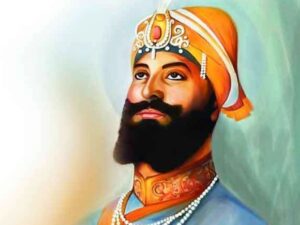
Guru Gobind Singh explained that he wished Panj Piare to be the beginning of a new system, the Khalsa (“pure,” from the Persian word khalisah, meaning “pure”). The masands (many of whom were quarrelsome or corrupt) would be abolished, and all Sikhs, beginning with Khalsa, would owe allegiance directly to the Guru. Gobind Singh then launched Amrit sanskar (“nectar festival”), the initiation service of Panj Piare. When the tradition was over, the Guru itself was started by Panj Piare. The order was then opened for anyone wishing to join, and Sikh tradition reports that large crowds responded.
It should be noted that, contrary to the beliefs of many Sikhs, some of the key elements of modern Khalsa did not exist in the time of Gobind Singh. For example, although the Guru required newcomers to Khalsa to carry weapons and never cut their hair (so that at least men could never deny their identity as Khalsa Sikhs), the wearing of “Ks five” —kes. or kesh (uncut hair), kangha (comb), kachha (short pants), kara (iron bracelet), and kirpan (festival sword) —that was not binding on all Sikhs until Singh was founded. Sabha, religion, and religion. the movement for educational change in the late 19th and early 20th centuries. The Sikh wedding ceremony, in which the bride and groom walk around the Guru Granth Sahib, is also a modern development, replacing the Hindu tradition, in which the bride and groom march around the holy fire, under the Anand Marriage Act of 1909. . The names Singh (“Lion”) for Sikh males and Kaur (“Princess”) for Sikh women, previously adopted at its inception in Khalsa, are now given to all Sikhs at birth and naming ceremonies (see below Rites and ceremonies). All these changes have been incorporated into the Rahit, a Sikh code of belief and morality, which reached almost its final stage in the early 20th century.
Guru Gobind Singh believed that the forces of good and evil in the world are sometimes not equal. When the forces of evil become so great, Akal Purakh intervenes in human history to justify equality, using certain individuals as his agents. By the time of Gobind Singh the forces of evil, represented by the Mughals under Aurangzeb, had gained supremacy, and it was the work of Gobind Singh, he believed, to correct the balance. In the service of this work, the Sikhs had reason to draw their swords. He expressed this conviction in Zafar-nama (“Letter of Victory”), a letter he wrote to Aurangzeb late.
Shortly after the creation of the Khalsa, the Guru was attacked by other Shiwalik officials in conjunction with the Mughal ruler of the city of Sirhind. In 1704 he was forced to withdraw from Anandpur, losing two of his four sons in the ensuing battle. The remaining two sons were taken to the Syrian governor, who brutally executed them by stabbing them alive with bricks. The fate of these two children has been a sad story for Sikhs ever since.
From Anandpur Gobind Singh fled south of the Punjab, where he defeated his pursuers at Muktsar. He then moved on to Damdama, staying there until 1706 and, traditionally, busy with the final revision of Adi Granth. When Aurangzeb died in 1707, Gobind Singh agreed to travel with Aurangzeb’s successor, Bahādur Shāh, to southern India. Upon arriving at Nanded on the banks of the Godavari River in 1708, he was executed by agents of the Sirhind governor.
Guru Gobind Singh is undoubtedly a very good Sikh. His paintings and those of Guru Nanak are commonly found in Sikh homes. He is regarded as the supreme example of all that he has to be the Khalsa Sikhs (Gursikhs). Her majesty is praised, her nobles are honored, and her beauty is deeply respected. Therefore, all members of Khalsa must follow his path and perform his duties unworthy of him.
